Have you ever considered that the foods you are sensitive to might just be part of the solution to your thyroid issues?
I know. I know.
What a crazy idea, right?
Actually, it’s not.
This trend has been growing for more than a decade.
We all want to eat healthy.
Yet, most thyroid sufferers are being misled into believing that they need to avoid many foods they suspect they are sensitive to.
In most cases, it’s not the food that’s the problem.
The true problem is the underlying dysfunction within your body.
A perfect example is hypothyroidism and histamine intolerance.
Immune Function, Histamine, and Foods
Like everything in your body, histamine plays an important role in maintaining your health.
It serves a number of important functions, particularly for your immune system.
Histamine is released by your mast cells in response to an immune trigger.
It dilates your blood vessels allowing easier access for your immune system to clean up the mess.
The problem, however, is that it creates inflammation in the process.
When immune function is stable and histamine is released in small amounts, the resulting inflammation is low.
The problem occurs when excessive histamine is produced or accumulates, which can result in a large amount of inflammation.
This can lead to histamine intolerance.
Common symptoms of histamine intolerance include:
- Headache
- Diarrhea
- Red and/or Itchy Eyes
- Nasal Congestion
- Runny Nose
- Asthma
- Elevated Heart Rate
- Anxiety
- Hives or Skin Rash
- Itching
Histamine can also come from other sources, such as foods.
For example, aged and fermented foods contain higher amounts of histamine.
These include:
- Fermented Alcoholic Beverages
- Fermented Foods: sauerkraut, vinegar, kefir, yogurt
- Aged and Cured Meats
- Aged Cheeses
Even healthy thyroid-supportive foods like shellfish, citrus fruits, and chocolate contain histamine.
Many who are histamine intolerant believe they must avoid all foods higher in histamine.
But remember, it’s not the histamines in the food that are the problem.
The problem is the overabundance of histamine in your body and your increased sensitivity to it.
This has much to do with your thyroid and estrogen dominance, which I’ll explain in just a minute.
Yet, avoiding healthy thyroid-supportive foods that contain histamine can actually prevent you from overcoming your histamine intolerance.
Take oranges for example. Sure, oranges contain some histamine, but they can also profoundly help to decrease histamine release within your body.
They can help correct the underlying dysfunction, which you’re about to see.
Hypothyroidism and Histamine Intolerance
Many believe histamine intolerance to be a result of an enzyme deficiency, specifically DAO (diamine oxidase).
The DAO enzyme is responsible for breaking down and clearing histamine from your body.
Sure, this can be a contributing factor, but there’s a lot more to it than that.
I talk a lot about hypothyroidism and estrogen dominance, and the thyroid-suppressive effects of estrogen.
Hypothyroidism causes estrogen dominance, while estrogen dominance further suppresses your thyroid function.
This creates what we refer to as a thyroid-suppressive feedback cycle that traps you in a hypothyroid state and very high levels of estrogen.
Estrogen also drives serotonin production.
This is why we commonly see elevated estrogen and serotonin levels in our thyroid clients.
But here are the important things to know…
Both estrogen and serotonin increase histamine production and the release of estrogen from your mast cells.
Effect of oestradiol on mast cell number and histamine level in the mammary glands of rat. https://www.ncbi.nlm.nih.gov/pubmed/22112012 “More mast cell number and higher histamine concentrations were observed in the oestrous stage than that in the prooestrous and dioestrous stages. Ovariectomy decreased the mast cell number and histamine concentration, which were reconstituted by exogenous oestradiol.”
Estrogen also prevents the clearing of histamine, which further allows the buildup of histamine.
Diamine oxidase (DAO) and female sex hormones. https://www.ncbi.nlm.nih.gov/pubmed/3088928 “Estradiol pretreatment elicited significant fall in DAO activity in the liver and specific increase in the uterus.”
But it gets even worse.
Histamine further increases estrogen levels, creating yet another thyroid-suppressive feedback cycle.
The effect of histamine on progesterone and estradiol secretion of human granulosa cells in serum-free culture. https://www.ncbi.nlm.nih.gov/pubmed/8147232 “Histamine stimulated a dose-related increase in estradiol secretion with a maximal stimulatory effect at 10(-3) mol/l.”
In other words, estrogen causes histamine intolerance in three ways…
- Estrogen increases histamine levels.
- Estrogen inhibits histamine removal.
- The resulting histamine increases estrogen, resulting in the cyclic production of more histamine.
Are you beginning to see the real problem?
This estrogen-histamine cycle has little to do with the foods you’re eating.
Yet, breaking this cycle is essential to overcoming your histamine intolerance.
Remember the oranges (containing histamine)
I mentioned previously?
If an orange can help your liver detoxify estrogen, thus helping to break this estrogen-histamine cycle, why would you want to avoid it?
Using this 3 Food Triple-Thyroid-Boosting Daily Protocol along with the 2-Step Approach I’m about to share with you is a simple way to get started.
You can download this daily protocol here.
Yes, you can use histamine containing foods to help fix the hypothyroidism and histamine problem.
We do it with our clients all the time.
Here’s how…
How to Break the Estrogen-Histamine Cycle – The 2-Step Fix
Sure, suffering from hypothyroidism and histamine intolerance isn’t fun.
We need to fix the problem, but preferably without making you feel even more miserable in the process.
That’s why we use this two-step approach to break the hypothyroidism and histamine intolerance cycle.
Step 1: Down-Regulate Histamine Driving Estrogen
If estrogen is the culprit driving your histamine intolerance and making your feel horrible, then of course we want to stop it.
This involves addressing estrogen from all angles:
- Stop the overproduction of estrogen.
- Block estrogen’s actions.
- Support estrogen detoxification to remove it from your body.
Improving your liver health is essential, which is responsible for detoxifying estrogen.
(NOTE: Want to learn more about improving your thyroid by supporting your liver? Read this article on “How to Heal Your Thyroid By Healing Your Liver”.)
We also lower estrogen through the proper use of:
Progesterone not only helps to fix the estrogen problem, it also inhibits the secretion of mast cells to help lower histamine and inflammation.
Progesterone inhibits mast cell secretion. https://www.ncbi.nlm.nih.gov/pubmed/17166400 “These results suggest that mast cell secretion may be regulated by progesterone and may explain the reduced symptoms of certain inflammatory conditions during pregnancy.”
Step 2: Block Histamine with Safe Anti-Histamines
Addressing the estrogen solves half the problem.
But remember, histamine increases estrogen production too.
So, protecting yourself from the harmful effects of histamine is still important.
Preventing the release of histamine and blocking histamine’s actions not only help to relieve your symptoms, they also help fix the problem.
There are many safe and effective anti-histamines you can use, including: Diphenhydramine (Benadryl) is a safe first-generation anti-histamine that doesn’t harm the liver and safely blocks the effects of histamine.
(Note: The study linking the use of Benadryl to dementia has been debunked.)
There are also amino acids that effectively lower histamine by stabilizing your mast cells and inhibiting histamine’s release.
The amino acid theanine, for example, has been shown to do just that.
Theanine is a candidate amino acid for pharmacological stabilization of mast cells. https://www.ncbi.nlm.nih.gov/pubmed/21344174 “Histamine release from mast cells was decreased with the treatment of theanine.”
So, there you have it.
If you suspect that hypothyroidism and histamine intolerance is a problem for you, don’t whittle your food list down to nothing.
The foods are not the real the problem.
Instead, use this 2-Step Approach to break the estrogen-histamine cycle and start fixing the real problem.
You can use it together with our 3 Food Triple Thyroid-Boosting Daily Protocol to start getting your liver healthy and lowering your histamine driving estrogen levels.
This protocol is used by each and every one of our clients.
Get more information about the 3 Food Triple-Thyroid-Boosting Daily Protocol here.


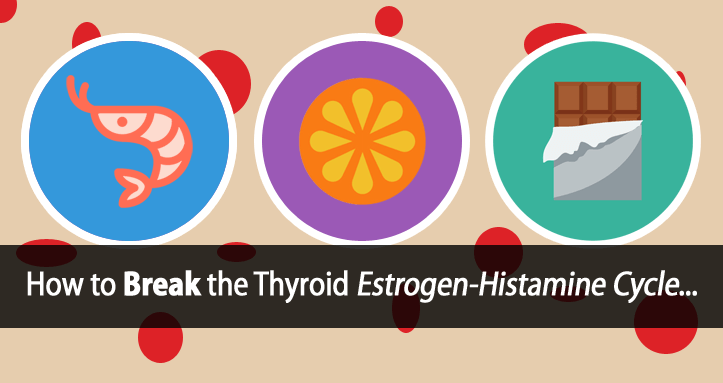
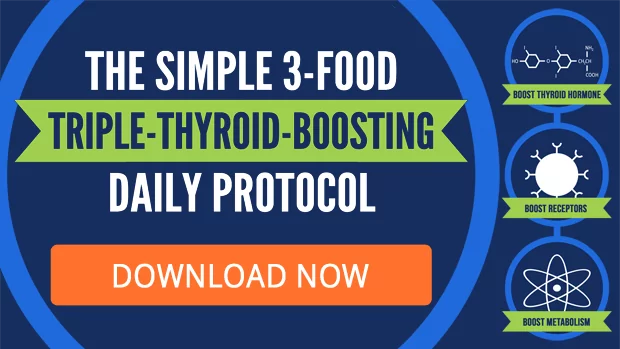
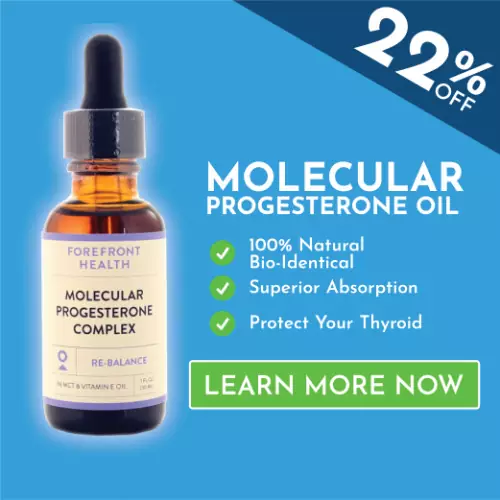
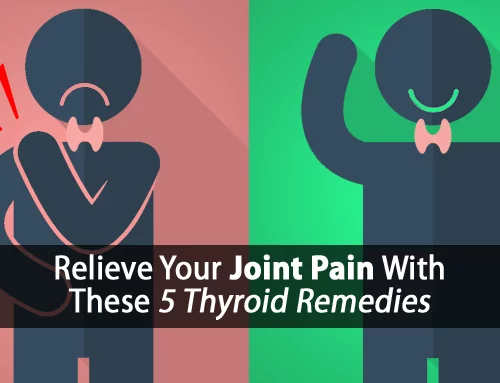
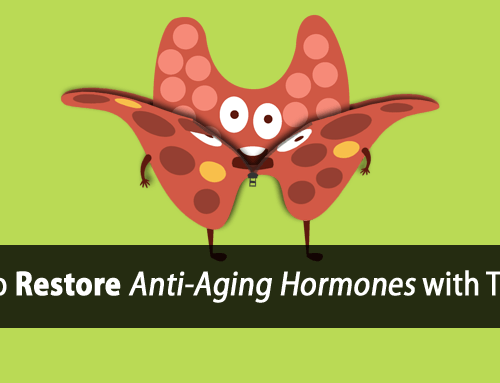
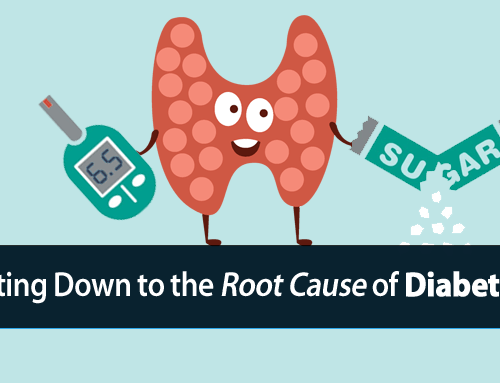
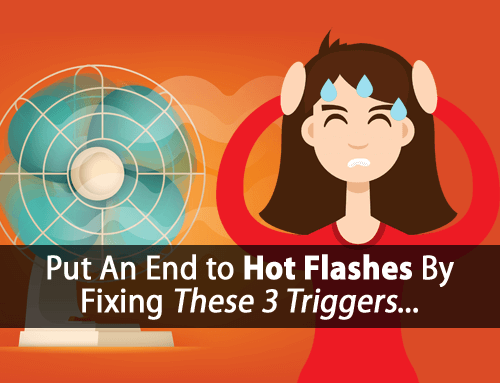
Please give a reference for the study where Benadryl causing dementia has been de-bunked.
Thank you
Karen
Hi Karen, There’s been much discussion regarding the dementia study as it was quite flawed. The benadryl users being studied were in extremely poor health compared to the non-users, which biased the results.
I purchase products like progesterone, your B complex, the ADK, protein powder … but no instructions. I need to know when and how much to take. Please inform.
Gary, the suggested usage for each product is listed on the ingredient labels shown. Just click on label for enlarged view.
Tom,
Thanks for all your insights. You’re completely changing hiw I manage my hypothyroidism and diabetes 2.
Can you talk more about the best way to use your progesterone suppliments? Is it better to take the 3-4 drops 1x per day or 1-2 drops several times throughout the day?
Also, I also have ongoing confusion on the timing of dessicsated thyroid meds. For example, I take Nature-throid upon waking and at bedtime. Should a second dose be taken earlier in the day? If so, what do you recommend? 3 pm? Dinner time?
Hi Kathy, it looks like you’re a Hypothyroidism Revolution Member, so it would be best to follow the recommendations from the program Supplement Guide. Both are covered in detail there.
I like your articles and posts. They are very informative and helpful. I’m just a little concerned when dealing with hormones and wonder if it would not be prudent to first have a blood panel or urine or saliva test done to determine progesterone levels before prescribing it across the board. Also, how does this apply to or impact post-menopausal women who are hypothyroid and are using bio-identical hormone therapy.
These articles should help:
https://www.forefronthealth.com/hypothyroidism-and-estrogen/
https://www.forefronthealth.com/test-for-estrogen-dominance/
Finally an article that addresses histamine and hypothyroidism! Thank you. I have a lot of environmental allergies and do immunotherapy allergy shots. What’s your thoughts regarding immunotherapy?
Tom,
Can you have histamine intolerance and low hormone levels on a blood test? Is this cycle always about hypothyroidism?
It has more to do with the balance of estrogen to progesterone, but estrogen often tests low on traditional labs when it’s quite high as it accumulates in the tissue and not the blood. Here’s more information: https://www.forefronthealth.com/test-for-estrogen-dominance/
How does this apply to someone like myself who had a complete thyroidectomy and am completely dependent on NatureThroid to provide T3? I also take progesterone and Vit E and a variety of amino acids among other supplements.
Hi Rebecca, it applies the same, with or without your thyroid. Of course, you do have supplement adequate thyroid hormone to compensate for what you cannot produce on your own.
I have recently followed and elimination diet protocol for about 6 weeks. (Dr. Amy Meyer) When I reintroduced milk, I started coughing immediately after drinking it. I had tried first with raw milk. After that, I took dairy out again for a week and tried store bought, homogenized/pasteurized milk but had the same symptoms. About half of my family reacts to dairy in some way: coughing, goose pimples that stay for a time or just excess phlegm.
What are your thoughts on this?
Hi Maria, that’s a commonly used and very poor/unscientific test. Enzyme production depends largely on the foods you eat. Avoid milk for 6 weeks and enzyme production declines. Then they typically have you re-introduce it quickly and in larger amounts than you can tolerate. An elimination diet will further suppress thyroid function, increase stress hormones, and impair enzyme production. I’ve written in more detail about dairy intolerance here: http://www.forefronthealth.com/hypothyroidism-and-dairy-intolerance/
I slowly began this journey this week, mostly following the diet. All of a sudden I am experiencing an allergic reaction on my legs. It’s like hives. I have never ever had an allergic reaction of any kind like this before. Could it be the orange juice? I can’t put my finger on why now. I went to the store and got Benadryl and that helps for a while. I am on day 2 of itchy legs and it’s not getting better. Please provide me with your thoughts. I have not had a chance to order any of your supplements or hormones yet. I basically just bought into this program. Maybe I am not hypothyroid. Humph!
Hi Christine, it sounds like this article applies to directly to you. The issue is the elevated estrogen/serotonin.
Hello,
This is really interesting because I am really struggling with histamine intolerance and thought it would only be a food- and enzyme-related problem.
I have hashimoto´s which is not treated as my numbers are, according to the doctors, “still too good”. But they only looked at the TSH…
So maybe the histamine problems are even worse because I don´t take anything for the thyroid?
Hi Dominique, Hashimoto’s is also related to estrogen dominance as I’ve covered here: https://www.forefronthealth.com/hypothyroidism-and-estrogen/
Unfortunately you can go by TSH labs. I cover that in this training: https://www.forefronthealth.com/lp/ultimate-thyroid-testing-protocol
My questions are; 1. Is Progesterone Complex ok for males to use? 2. Does Progesterone Complex meet vitamin E requirements since it contains tocopherols? 3. Is it ok for people who are thin to use thyroid to try to treat histamine issues? Thanks!
Hi Toni, progesterone is safe for males to use. We don’t use it with all males, but do when it’s warranted. However the dosage is typically much less. The progesterone does contain vitamin E, which acts as a carrier to deliver the progesterone directly into the bloodstream when applied properly. But it’s not enough vitamin E for the therapeutic purposes we use it for. Finally, not all hypothyroidism sufferers are overweight. That’s important to understand. I work with thyroid sufferers who are extremely underweight as well. So, thyroid can and should be used when needed, regardless of body size.
Tom,
Can you talk about estrogen dominance in post-menopausal women? How dominant a problem can estrogen dominance be for women in that stage of life? I’ve been hypothyroid for decades (partial lobectomy at 20) and undiagnosed until recently. However, everything hormonal really went really wackadoodle during menopause and in the post-menopause stage. Estrogen dominance in post-menopause is confusing.
Hi Kathy, I’ve written about that very topic in this post here: https://www.forefronthealth.com/hypothyroidism-and-estrogen/
In menopause estrogen can be produced (even in large amounts) via the aromatase enzyme without the need for ovarian function. However, progesterone can only be produced elsewhere in the adrenal glands, but not in sufficient amounts to support the body’s needs or compensate for the estrogen that accumulates in the tissue.
Hi Tom, I’ve recently and regretfully had to eliminate dairy as it was causing all types of problems including blocked ears to the point I was unable to hear. I really miss no dairy in my coffee can you suggest another ingredient I could use that is safe, such as perhaps coconut cream. cheers!!
Hi Majda, I’ve covered dairy issues in detail here: https://www.forefronthealth.com/hypothyroidism-and-dairy-intolerance/
Tom, if drinking pulpless OJ increases endotoxin (it does for me) then wouldn’t it be best to avoid it?
It’s not likely, but that would mean you have a very serious SIBO issue. The food is not the problem. It’s always best to address the real underlying problem.
Great article Tom, thank you. I have been trying to figure out what causes my extreme reaction to wine (insomnia, racing heart, headache, high adrenaline) and realized recently it was a histamine response. Now I know what I have to do!
Tom – Thanks for the Benadryl tip. I tried it last night about an hour before bedtime. First time in years my eczema didn’t flare up within minutes of lying down for bed. It helped me fall asleep faster and not wake up during the night itching.
You’re doing us all a great service! Glad I discovered you!
Tom, thank you so much for your reply regarding my hives. I took theanine and benedryl yesterday & today. Unfortunately I am still itching like crazy…especially at night. Hence, the hives/allergy putting extra strain on my already problems with sleep. Any other recommendations? How much theanine and how much benedryl? Do you think that perhaps I dove into the diet too quickly because I immediately began doing the diet at 100%. Again, thanks for your input!! :)
Hi Tom, I am very histamine sensitive as well as my 8 year old son and 5 year old daughter. We have been using quercetin and nettle as a natural antihistamine. What are your thoughts on these? Thank you.
I just wanted to point out that I noticed recently (before I found this site) that midol (the over the counter “PMS relief” pills) contains an antihistamine (not benedryl). I found before that it was the only remedy that helped me during my cycle. Now I will try simple benedryl if I am getting similar symptoms, although with the protocol and adjusting my t3 and progesterone dosages I have had at least one period that was headache and almost completely cramp-free which is a huge first. I have also noticed a tremendous difference since eating the raw carrots. I feel like I am still not balanced out but I’m getting somewhere for the first time.
Will taking something like Zyrtec help, instead of Benadryl? Can’t take Benadryl in daytime, makes me too sleepy!
Hi Donna, zyrtec is a second generation antihistamine that are know to cause liver damage. First generation antihistamines don’t, which makes them much safer to use. Most use Benadryl at night for this reason.
Hey Tom.
Great article! What are your thoughts on Doxylalamine succinate? Is it safe? I almost always need it to be able to fall asleep.
Thanks